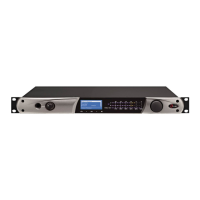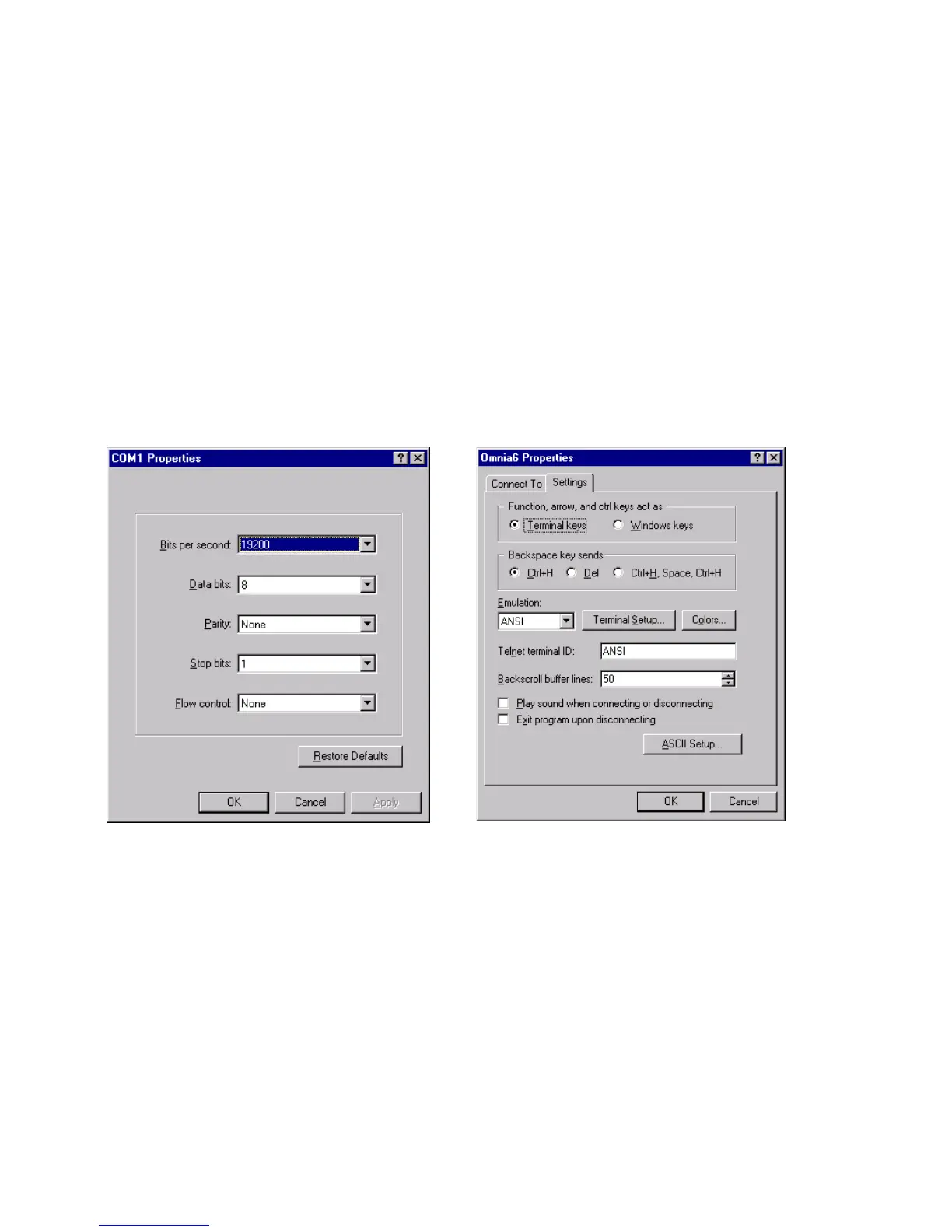Appendix B: Troubleshooting/Service/Warranty
Operational problems with the Omnia.ONE can sometimes be diagnosed using the RS-232 serial port located inside
the top cover of the unit (NOTE: This is not the rear panel “RS-232 MODEM” connector) and a common terminal
communications program. Detailed information about the Omnia's boot-up progress may be observed at this internal
RS-232 port, as well as viewing of any error messages that may be encountered. This chapter explains the various
boot up and error messages that may be encountered while troubleshooting the unit. We'll cover some basic
troubleshooting techniques for isolating possible Omnia.ONE problems in the field, and also how to obtain help or
repair service from Omnia.
To take complete advantage of this functionality, you only need a standard terminal program for DOS, Windows, or
other operating system. It must be configured for a default baud rate of 19200, no hardware handshaking, and using
a terminal emulation for VT100. At Omnia, we commonly use the Hyperterminal
©
program that ships with
Microsoft Windows
©
, but you can use whatever program you are familiar with. Please see the examples below for
how we've set up our connection:
Once these parameters have been entered and saved as a connection profile, they can be used to capture and display
(and print) the output of the Omnia.ONE’s RS-232 internal serial port during boot up.

